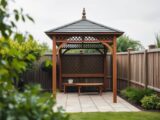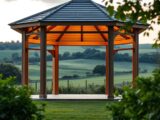What Are the Downsides of Log Cabins? – Key Considerations

Log cabins captivate many with their rustic charm and natural beauty. Yet, prospective owners must understand the significant log cabin disadvantages before investing. While these wooden structures offer unique aesthetic appeal, they present substantial log home challenges that require careful consideration.
Potential buyers should recognise that log cabins demand specialised maintenance and care beyond traditional housing. The romantic vision of a woodland retreat often masks complex structural, financial, and environmental considerations that can surprise unprepared homeowners.
Understanding these potential drawbacks is crucial for making an informed decision. Each aspect of log cabin ownership requires thorough research and realistic expectations to ensure long-term satisfaction and sustainable living.
Inhaltsverzeichnis
Key Takeaways
- Log cabins require specialised maintenance
- Structural integrity demands regular professional inspection
- Initial construction costs are typically higher
- Climate significantly impacts cabin durability
- Energy efficiency can be challenging
- Potential insurance complications exist
Understanding the Hidden Challenges of Log Cabin Ownership
Log cabin ownership presents a unique set of challenges that extend far beyond the initial excitement of acquiring a rustic retreat. Potential owners must navigate complex log cabin construction challenges that require specialised expertise and careful planning.
Building a log cabin demands meticulous attention to detail and specific technical skills. Prospective owners quickly discover that traditional construction methods do not apply to these distinctive structures.
Initial Construction Intricacies
Log cabin construction involves several unique considerations:
- Selecting premium timber with minimal moisture content
- Implementing specialised joining techniques
- Ensuring precise log alignment and settling
- Managing potential structural shrinkage
Long-term Maintenance Requirements
Log home maintenance costs can be substantially higher than conventional housing. Owners must commit to regular preservation efforts to protect their investment from environmental degradation.
Financial Implications
The financial landscape of log cabin ownership extends well beyond initial construction expenses. Ongoing log home maintenance costs include:
- Annual protective treatments
- Periodic structural inspections
- Weatherproofing interventions
- Potential restoration work
Understanding these challenges helps potential log cabin owners make informed decisions about their unique property investment.
The Natural Enemy: Moisture and Water Damage
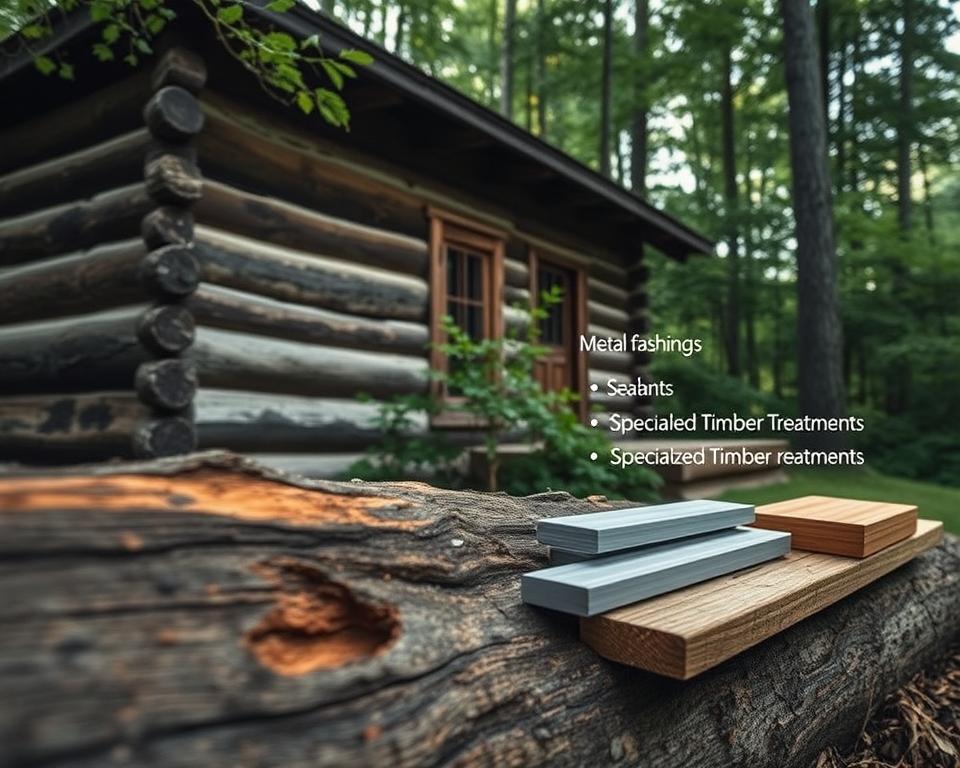
Log cabin water damage represents a critical challenge for homeowners. Moisture problems in log homes can silently undermine the structural integrity of your cherished wooden retreat. Logs are inherently porous materials that absorb water easily, creating an environment ripe for potential deterioration.
Water infiltration occurs through multiple pathways:
- Direct rainfall penetration
- Ground moisture seepage
- Condensation build-up
- Inadequate roof drainage
Wooden structures are particularly vulnerable to moisture-related complications. When water penetrates log surfaces, it triggers a cascade of potential issues including:
- Wood rot
- Mould growth
- Structural weakening
- Insect infestation
“Prevention is always more cost-effective than repair when addressing log cabin water damage” – Timber Conservation Expert
Mitigating moisture problems in log homes requires strategic interventions. Proper sealing, regular inspections, and implementing effective drainage systems can significantly reduce water-related risks. Homeowners must remain vigilant, understanding that proactive maintenance is key to preserving their log cabin’s longevity and structural health.
What Are the Downsides of Log Cabins?
Log cabins offer a charming retreat, but potential owners must understand their unique challenges. From structural concerns to energy efficiency and insurance complexities, these rustic dwellings require careful consideration before investment.

Navigating the world of log cabin ownership involves addressing several critical aspects that can impact long-term satisfaction and property value.
Structural Settlement Challenges
Log cabin structural problems are more prevalent than many realise. Natural wood characteristics mean these homes experience significant settlement over time. Logs shrink, twist, and compress, creating potential structural integrity issues.
- Initial settling can cause wall gaps
- Uneven foundation development
- Potential misalignment of windows and doors
Energy Efficiency Considerations
Contrary to popular belief, log home energy efficiency isn’t automatically superior. Wooden structures can have substantial thermal challenges that impact heating and cooling expenses.
- Increased air infiltration through log joints
- Higher heat transfer rates
- Additional insulation requirements
Insurance Complexities
Log cabin insurance issues present another significant hurdle for potential owners. Specialised properties often require unique insurance approaches, frequently resulting in higher premiums and limited coverage options.
- Higher risk assessment by insurers
- Specialised maintenance documentation requirements
- Limited number of insurance providers
Understanding these challenges helps prospective log cabin owners make informed decisions and prepare for potential long-term maintenance investments.
Pest Control and Prevention Challenges
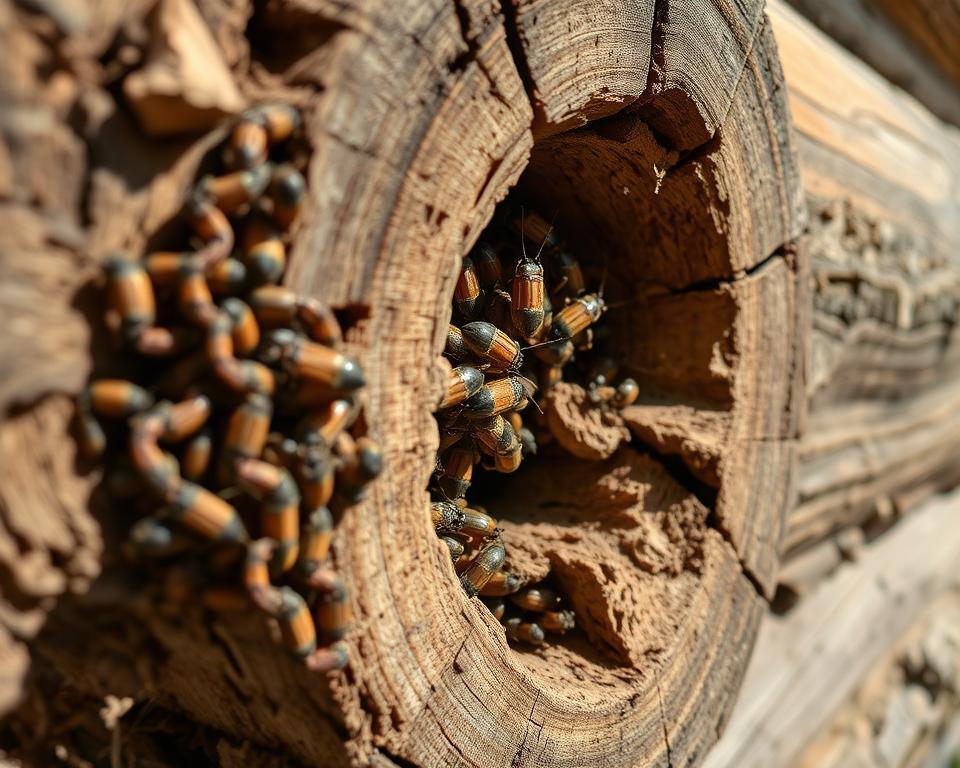
Log cabin pest problems are a significant concern for homeowners. Wood-boring insects can silently destroy the structural integrity of your beloved retreat, making vigilant prevention crucial. These tiny invaders pose a serious threat to log homes, targeting the very wood that creates their charming aesthetic.
The most common wood-boring insects in log homes include:
- Carpenter ants
- Termites
- Powderpost beetles
- Longhorn beetles
Each of these pests presents unique challenges for log cabin owners. Carpenter ants, for instance, create extensive tunnel networks within wooden structures, weakening the wood from the inside. Termites can consume massive amounts of wood, potentially compromising the cabin’s structural stability.
| Pest Type | Damage Potential | Detection Difficulty |
|---|---|---|
| Carpenter Ants | High | Moderate |
| Termites | Very High | Low |
| Powderpost Beetles | Moderate | High |
Preventing log cabin pest problems requires a proactive approach. Regular inspections by professional pest control experts can help identify potential infestations early. Wood treatments and protective sealants create barriers against wood-boring insects, reducing the risk of significant damage.
Expert tip: Maintain proper ventilation and keep wood surfaces dry to minimise the risk of pest infestations in your log cabin.
The Cost of Regular Maintenance and Repairs
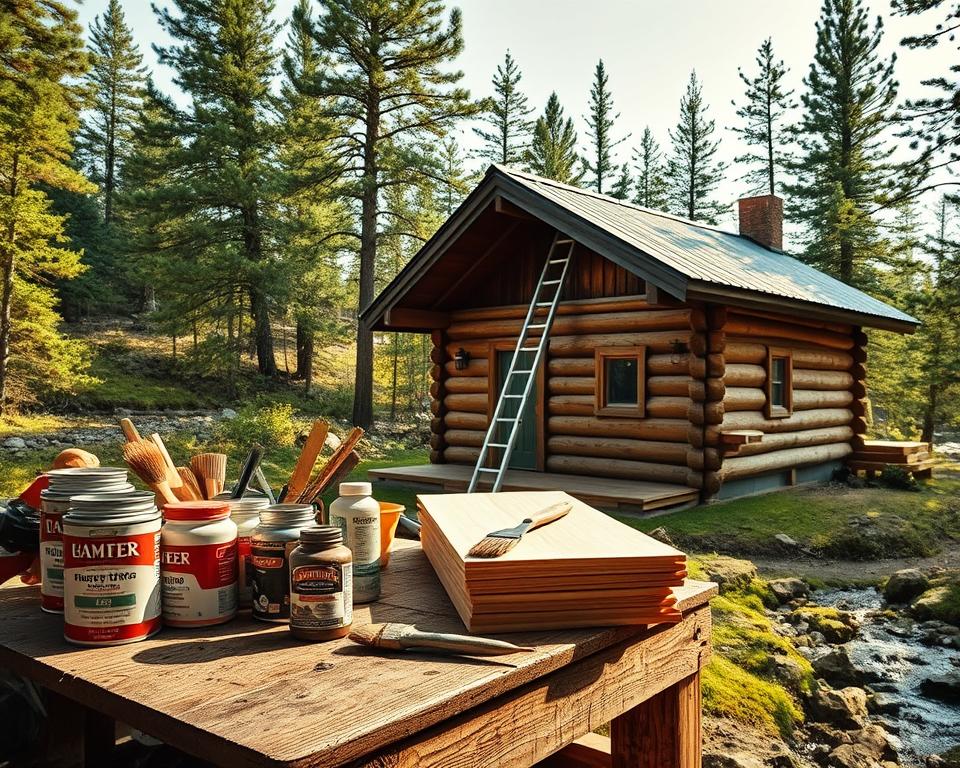
Owning a log cabin comes with unique maintenance challenges that directly impact log cabin maintenance expenses. Homeowners must budget carefully for the specialised care these distinctive structures require. Log home repair costs can be substantial, but proactive maintenance helps prevent more expensive damage in the long run.
Understanding the financial commitment is crucial for potential log cabin owners. The ongoing expenses go beyond typical home maintenance, requiring specific treatments and professional interventions.
Annual Inspection Requirements
Regular inspections are the cornerstone of log cabin preservation. Experts recommend comprehensive assessments at least once annually to identify potential issues early. These inspections typically cover:
- Structural integrity checks
- Moisture and rot assessment
- Insect damage evaluation
- Sealant and chinking condition
Treatment and Preservation Expenses
Protecting your log home requires ongoing investment. Log home repair costs for preservation include:
- Staining and sealing: £500-£1,500 annually
- Chinking replacement: £300-£800 per application
- Protective wood treatments: £200-£600 per treatment
Professional Service Costs
Specialised log cabin maintenance professionals provide essential services. While their expertise comes at a price, they help prevent costly structural damage. Typical professional service rates range from £75 to £250 per hour, depending on the complexity of the maintenance required.
Homeowners should view these log cabin maintenance expenses as vital investments in their property’s longevity and value. Proper care ensures your log cabin remains a beautiful and structurally sound retreat for years to come.
Limited Design Flexibility and Modification Options

Log cabin design limitations present unique challenges for homeowners wanting to adapt their living spaces. When considering modifying log homes, owners quickly discover the structural complexities that restrict design modifications.
The inherent nature of log cabin construction creates significant obstacles for expansions or layout changes. Traditional building methods using interlocking logs mean that altering the structure isn’t as straightforward as with conventional homes.
- Structural integrity becomes compromised during modifications
- Load-bearing walls cannot be easily removed
- Custom additions require specialised engineering
- Precise log alignment demands expert craftsmanship
Homeowners interested in modifying log homes must consider several critical factors. The unique construction technique means that even minor alterations can be expensive and technically challenging. Structural settlement, log shrinkage, and precise joinery create additional complexity.
Professional log home specialists are essential for any significant design changes. They understand the intricate requirements of maintaining the cabin’s original structural integrity while implementing desired modifications.
Adapting a log cabin requires expertise beyond standard home renovation techniques.
Potential design restrictions include limited window placement, challenging room additions, and complex roof modifications. Homeowners must carefully evaluate their long-term space requirements before investing in a log cabin to mitigate potential future limitations.
Climate Impact on Log Cabin Durability
Log cabin owners face significant challenges from environmental conditions. Climate effects on log homes can dramatically influence their structural integrity and longevity. Understanding these impacts helps homeowners protect their valuable investments against potential weather-related damage.
Extreme Weather Challenges
Different climatic zones present unique risks for log cabin structures. Log cabin weather damage manifests through various environmental stressors:
- Prolonged sun exposure causing wood bleaching and cracking
- Heavy rainfall leading to moisture penetration
- Intense winter conditions creating potential frost damage
- High humidity environments promoting wood rot
Seasonal Maintenance Strategies
Proactive maintenance becomes crucial in mitigating climate-related deterioration. Seasonal protective measures can significantly extend a log cabin’s lifespan:
- Regular waterproofing treatments
- Annual professional wood inspections
- Prompt repair of any visible structural weaknesses
- Implementing protective sealants
Temperature Fluctuation Management
Temperature variations cause log cabins to expand and contract, potentially creating structural stress. Careful design and maintenance help minimise these risks, ensuring long-term durability and stability.
Resale Value and Market Limitations
Selling log homes presents unique challenges in the real estate market. The log cabin resale value can be significantly influenced by several critical factors that potential sellers must understand. Unlike traditional properties, log homes require a specialised approach when entering the selling process.
Key considerations affecting log cabin resale value include:
- Maintenance history and current condition
- Location and surrounding landscape
- Quality of original construction
- Age and preservation status of the log structure
Potential buyers for log homes represent a niche market. Not everyone appreciates the unique characteristics of log cabin living, which can narrow the pool of interested purchasers. This limitation directly impacts selling log homes and can potentially extend the time required to complete a sale.
| Factor | Impact on Resale Value |
|---|---|
| Structural Integrity | High (60-75% of property value) |
| Maintenance Records | Medium (15-25% of property value) |
| Location Desirability | High (20-40% of property value) |
Homeowners can improve their log cabin resale value by:
- Maintaining comprehensive maintenance documentation
- Investing in regular professional inspections
- Working with estate agents specialising in log home sales
- Preserving the original architectural integrity
Strategic preparation and understanding the unique market dynamics can significantly enhance the prospects of successfully selling log homes.
Environmental and Regulatory Considerations
Navigating the complex landscape of log cabin building regulations requires careful planning and expert guidance. Potential log home owners must understand the intricate legal and environmental frameworks that govern construction in different regions.
Log cabin construction involves multiple regulatory challenges that prospective owners must carefully consider. The environmental impact of log homes extends beyond simple aesthetic considerations.
Building Code Compliance
Log cabin building regulations vary significantly across different jurisdictions. Key compliance considerations include:
- Structural integrity requirements
- Fire safety standards
- Timber treatment specifications
- Foundation and structural settlement guidelines
Environmental Impact Assessment
The environmental impact of log homes demands thorough evaluation. Sustainable practices have become increasingly important in modern construction.
| Assessment Criteria | Evaluation Points |
|---|---|
| Timber Sourcing | Certified sustainable forestry practices |
| Energy Efficiency | Insulation and thermal performance |
| Carbon Footprint | Lifecycle emissions analysis |
Local Planning Restrictions
Each region maintains unique local planning restrictions that can significantly impact log cabin construction. Researching local guidelines becomes crucial for successful project implementation.
- Zoning regulations
- Land use permissions
- Height and design limitations
- Environmental protection zones
Professional consultation with local authorities and experienced architects can help navigate these complex regulatory landscapes effectively.
Conclusion
Log cabin ownership presents a complex landscape of unique considerations. The journey of selecting and maintaining a log home requires careful evaluation of multiple factors beyond traditional property investment. While these rustic dwellings offer extraordinary aesthetic appeal, potential owners must understand the intricate log cabin ownership challenges that accompany such a distinctive housing choice.
Prospective log home buyers should approach their decision with comprehensive research and professional guidance. The log home considerations extend far beyond initial purchase, encompassing ongoing maintenance, structural integrity, environmental adaptations, and financial planning. Potential owners must assess their personal capabilities, financial resources, and long-term commitment to preserving these specialised dwellings.
Understanding the nuanced challenges does not diminish the romantic allure of log cabin living. Successful ownership relies on realistic expectations, proactive maintenance strategies, and a genuine appreciation for the unique characteristics of wooden structures. By thoroughly investigating potential obstacles and preparing appropriately, individuals can transform log cabin ownership from a potential burden into a rewarding lifestyle experience.
Ultimately, log homes represent more than just a dwelling – they are a passionate commitment to architectural tradition, natural aesthetics, and personalised living spaces. With diligent preparation and informed decision-making, the dream of log cabin ownership can become a sustainable and enriching reality.
FAQ
Are log cabins difficult to maintain?
Log cabins require significant ongoing maintenance compared to traditional homes. You’ll need annual inspections, regular treatments for wood preservation, and specialised care to prevent moisture damage, pest infestations, and structural deterioration. This maintenance can be more time-consuming and expensive than caring for a standard house.
How do climate conditions affect log cabin durability?
Climate plays a crucial role in log cabin longevity. Extreme weather conditions like intense sunlight, heavy rainfall, and temperature fluctuations can cause significant stress on wooden structures. Logs expand and contract with temperature changes, potentially leading to structural issues, gaps in chinking, and increased vulnerability to moisture and pest damage.
Are log cabins energy efficient?
Contrary to popular belief, log cabins are not naturally highly energy efficient. The thick logs can provide some thermal mass, but they often require additional insulation and weatherproofing to maintain consistent indoor temperatures. This can lead to higher energy costs compared to modern, well-insulated traditional homes.
What are the typical insurance challenges for log cabins?
Insuring a log cabin can be more complex and expensive than standard home insurance. Many insurance providers view log cabins as higher-risk properties due to their unique construction, increased maintenance requirements, and vulnerability to environmental factors. This can result in higher premiums and more limited coverage options.
Can I easily modify or expand a log cabin?
Log cabins have limited design flexibility compared to conventional homes. Adding rooms, changing layouts, or making significant structural modifications can be challenging and expensive. The unique construction method and the potential impact on the structural integrity make alterations more complicated and costly.
What pest problems are common in log cabins?
Log cabins are particularly susceptible to wood-boring insects like carpenter ants, termites, and wood beetles. These pests can cause extensive damage to the wooden structure, often going undetected until significant harm has occurred. Regular professional inspections and preventative treatments are essential to protect the cabin.
How do log cabins perform in resale markets?
Log cabins can have a limited resale market due to their specialised nature. Potential buyers are often fewer compared to traditional homes, and the cabin’s value depends heavily on its maintenance history, location, and overall condition. Finding the right buyer who appreciates the unique characteristics of a log cabin can be more challenging.
What are the initial construction challenges?
Building a log cabin requires specialised skills and materials. Not all builders are experienced in log home construction, which can lead to higher initial building costs. The process involves precise log selection, expert joinery techniques, and understanding unique structural requirements that differ significantly from conventional home construction.
